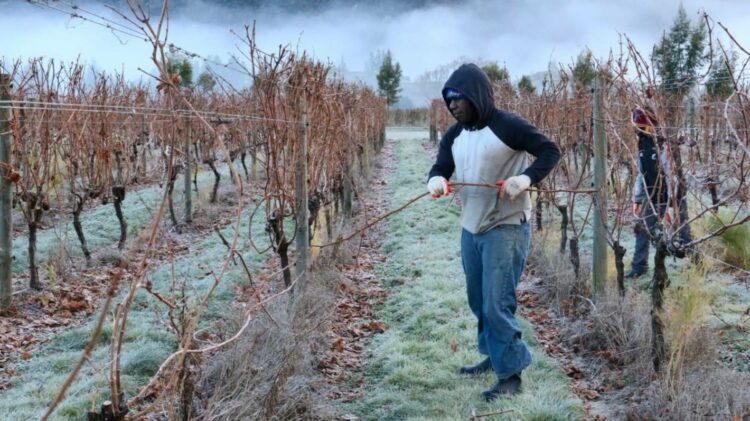2007년 7월 1일부터 2022년 6월 30일 사이에 태평양 계절 근로자의 4분의 1만이 뉴질랜드로 돌아왔다는 새로운 연구 결과가 나왔습니다.
신규 채용자와 RSE (공인 계절 고용주) 제도에 복귀한 근로자 간에 고용 기회가 공정하게 분배되고 있는지에 대한 우려가 제기되었습니다.
이 연구에서는 고용주가 원하는 기술과 경험을 쌓은 복귀 근로자에게 RSE 일자리가 제공되고 있는지 여부를 조사했습니다.
연구원들은 또한 2007년 이후 102,000명의 태평양 지역 주민이 아오테아로아에 도착한 것에 해당하는 30,000명 이상의 근로자들의 귀환 빈도를 조사했습니다.
현재 상한선은 19,000명이지만 Luxon은 뉴질랜드 시골의 노동력 부족 완화를 위해 38,000명으로 두 배로 늘릴 것이라고 말했습니다.
연구에서는 태평양 계절 근로자가 뉴질랜드로 얼마나 자주 돌아오나요?는 수요일에 발표되었으며, 2007년 이후 모집된 36,675명의 RSE 근로자 중 16,095명이 101,850명의 RSE 비자 도착자 데이터베이스에 단 한 번만 등장한 것으로 나타났습니다.
나머지 20,580명의 RSE 근로자는 2007년에서 2022년 사이에 한 번 이상 계절 근무를 위해 뉴질랜드로 돌아왔습니다.
솔로몬 제도와 키리바시는 모두 61% 로 가장 높은 수익률을 기록했으며 통가 (58.5%) 와 바누아투 (58.2%) 가 그 뒤를 이었습니다.
두 시즌 이상 영입되었으며, 나우루는 33% 로 가장 낮은 수익률을 보였습니다.
크레딧: stuff.co.nz






























































